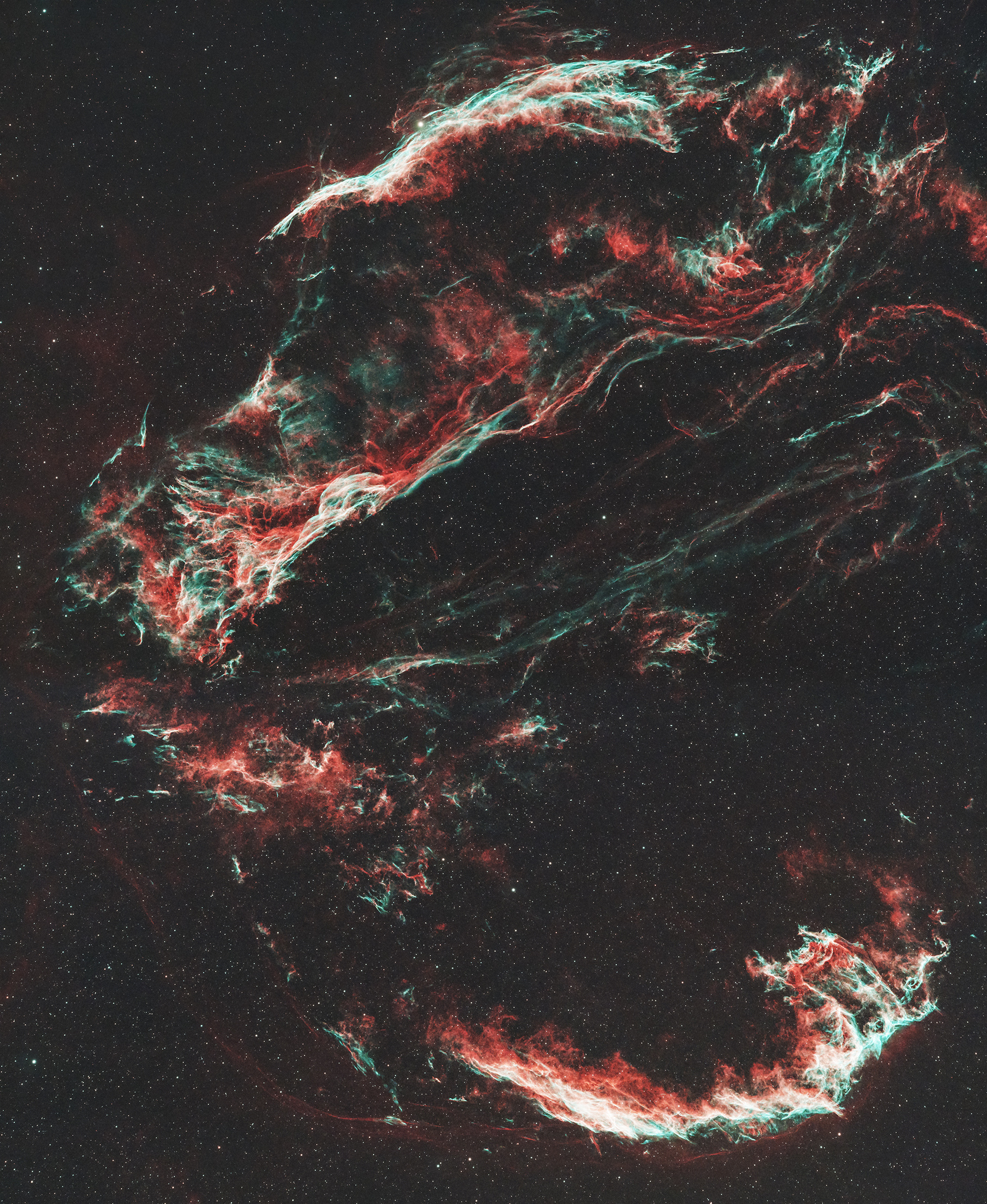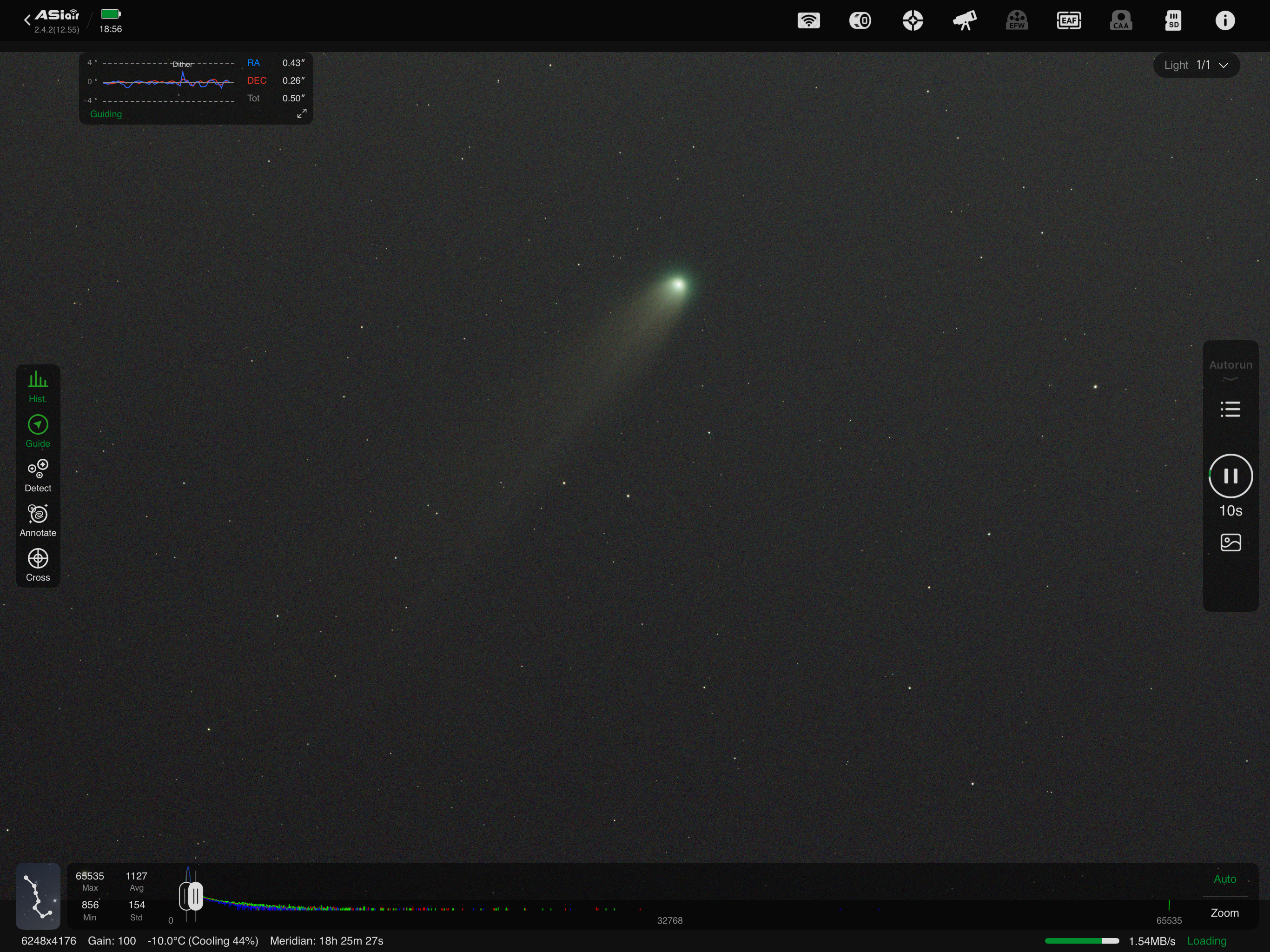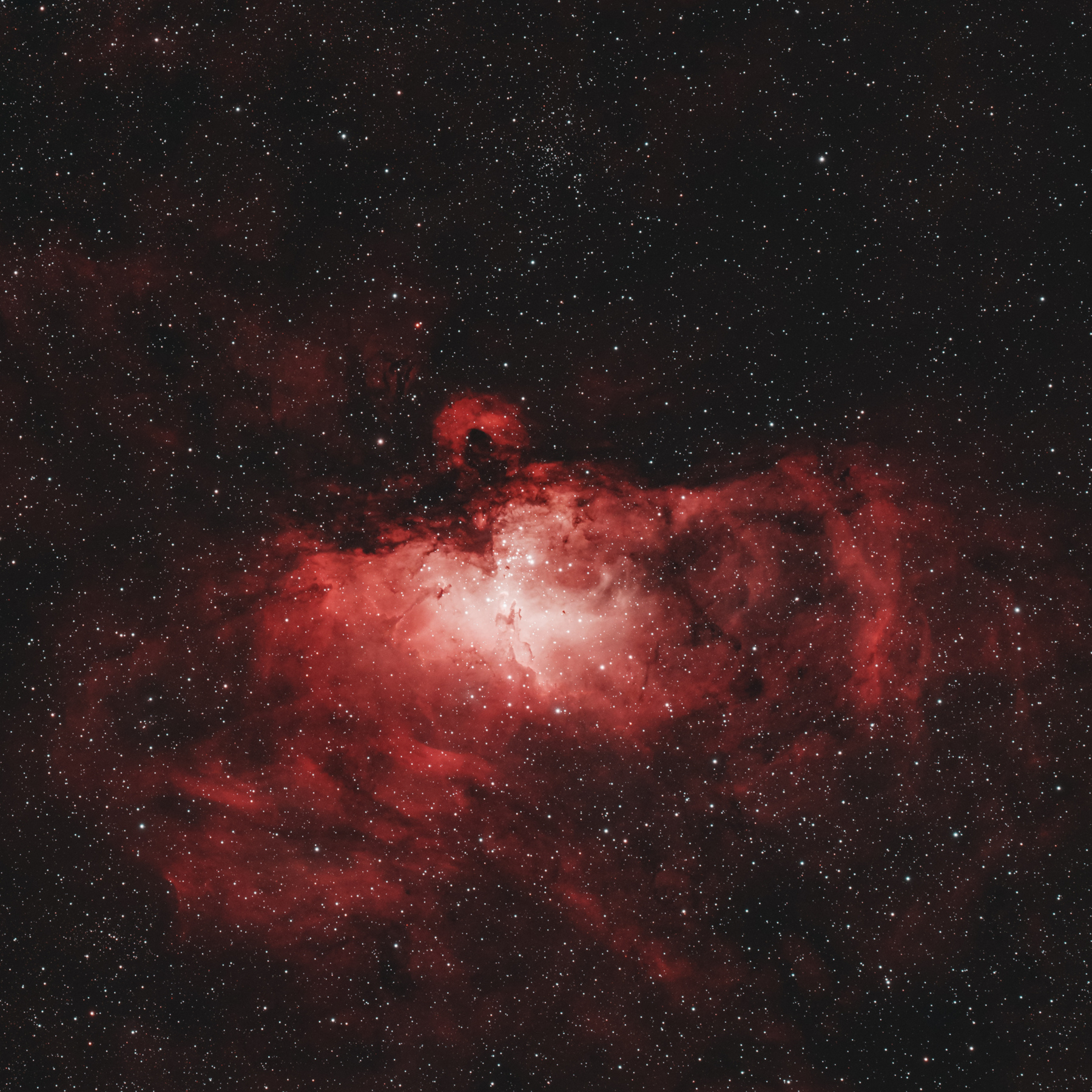Astro
Added 3 more hours of subs on California nebula. It seemed to reduce noise and bring out more details of the nebula. That’s what one would expect with longer exposure.
🔭WO UC 108 📷ASI2600MC-Duo Optolong LeNhance filter 61x5-min subs #astrophotography #astro
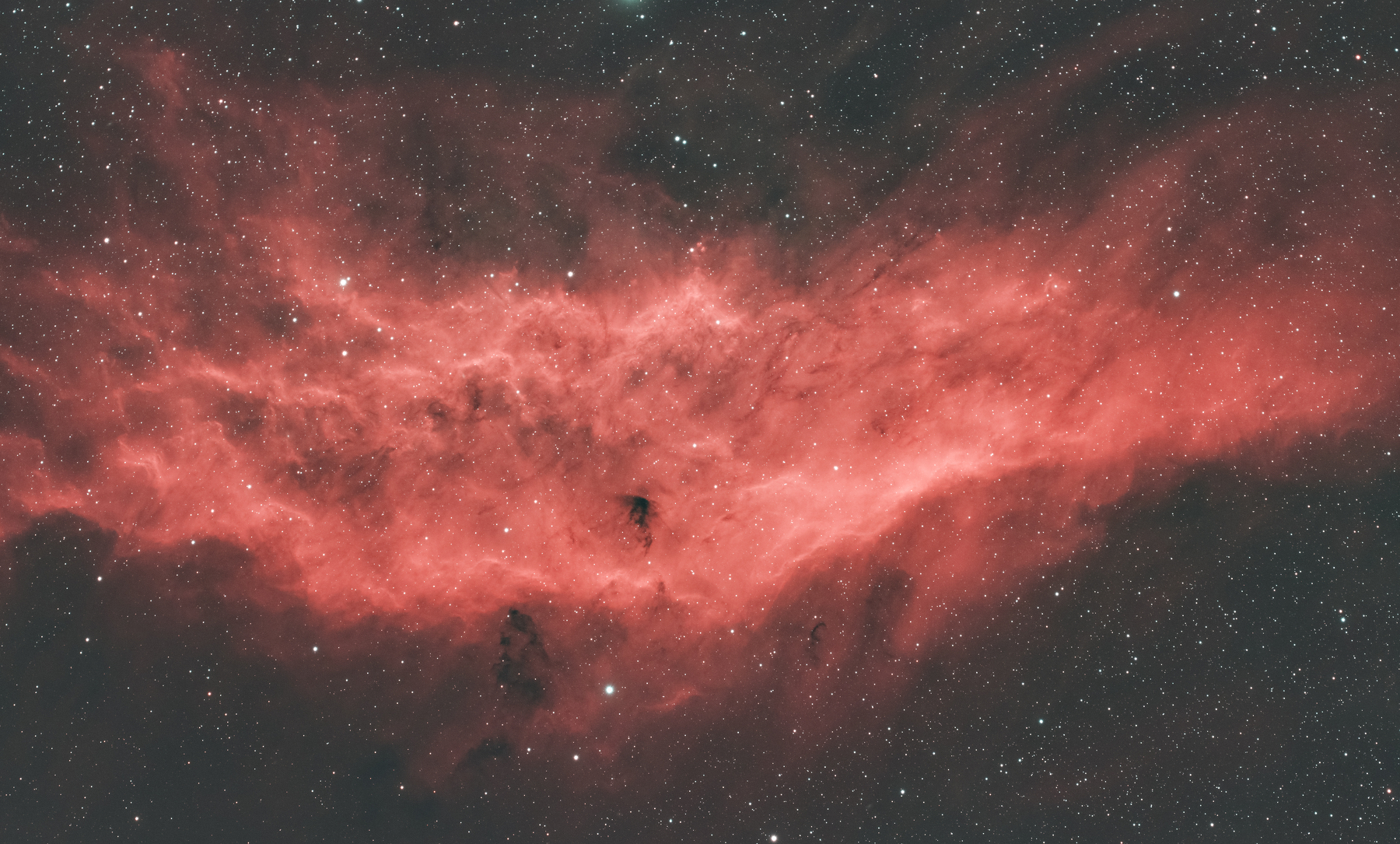
Was able to capture just about 2 hours of California nebula (NGC1499) on the night of Winter Solstice before clouds came in. This emission nebula in Perseus is at 1K ly and is powered by nearby star Menkhib.
🔭WO UC 108 📷ASI2600MC-Duo Optolong LeNhance filter 23x5-min subs #astrophotography #astro
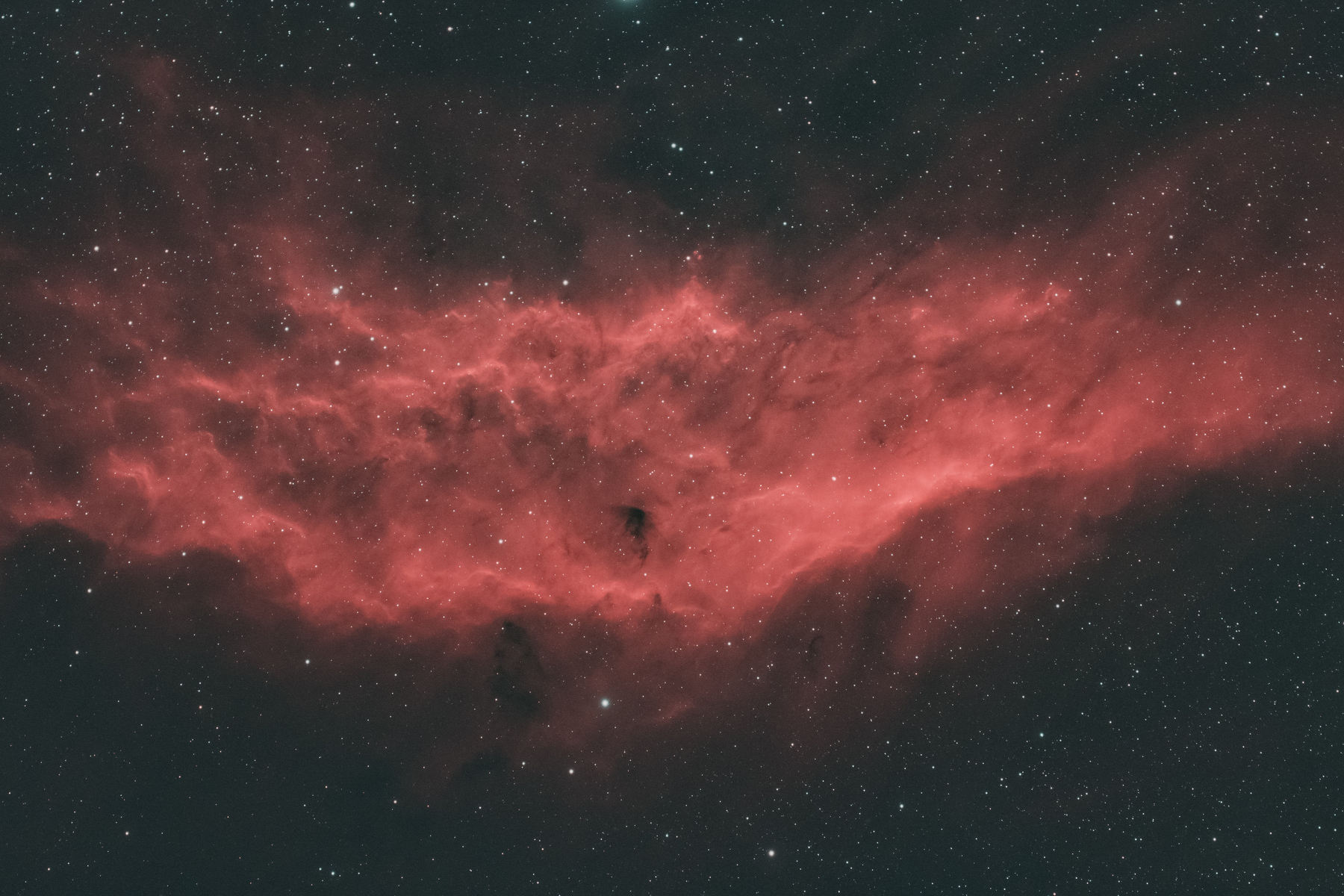
Shooting California nebula (NGC1499) tonight. The guiding is working well. Hoping to collect at least 3 hours of 5-min subs.
#astro #astrophotography
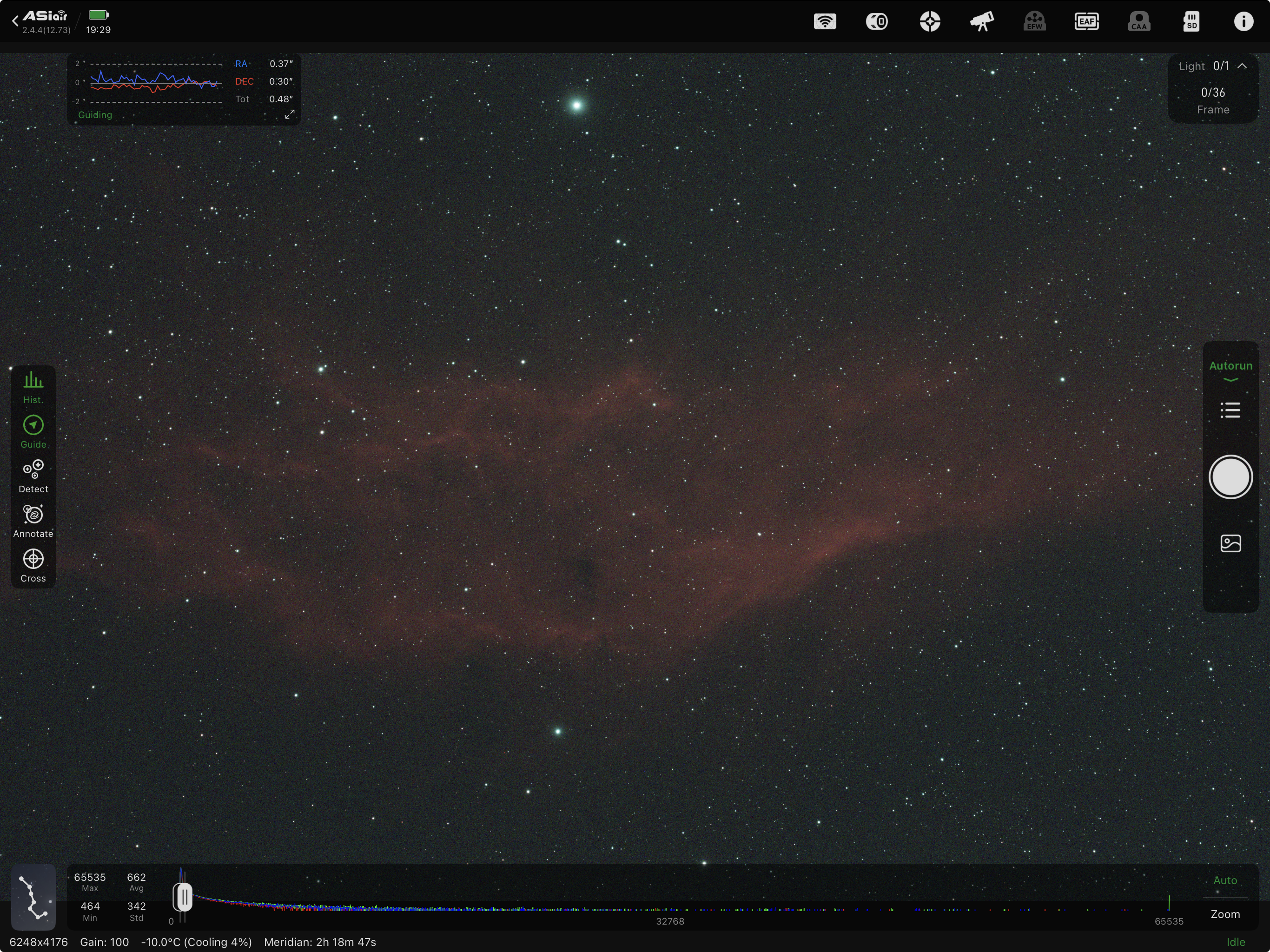
Tulip nebula is an emission nebula in Cygnus. Not as bright and big as other nebulae around it but there is an interesting object in the same field of view. The blue lines point to the location of an X-ray source, Cygnus x-1 - the first ever black hole candidate discovered in 1964.
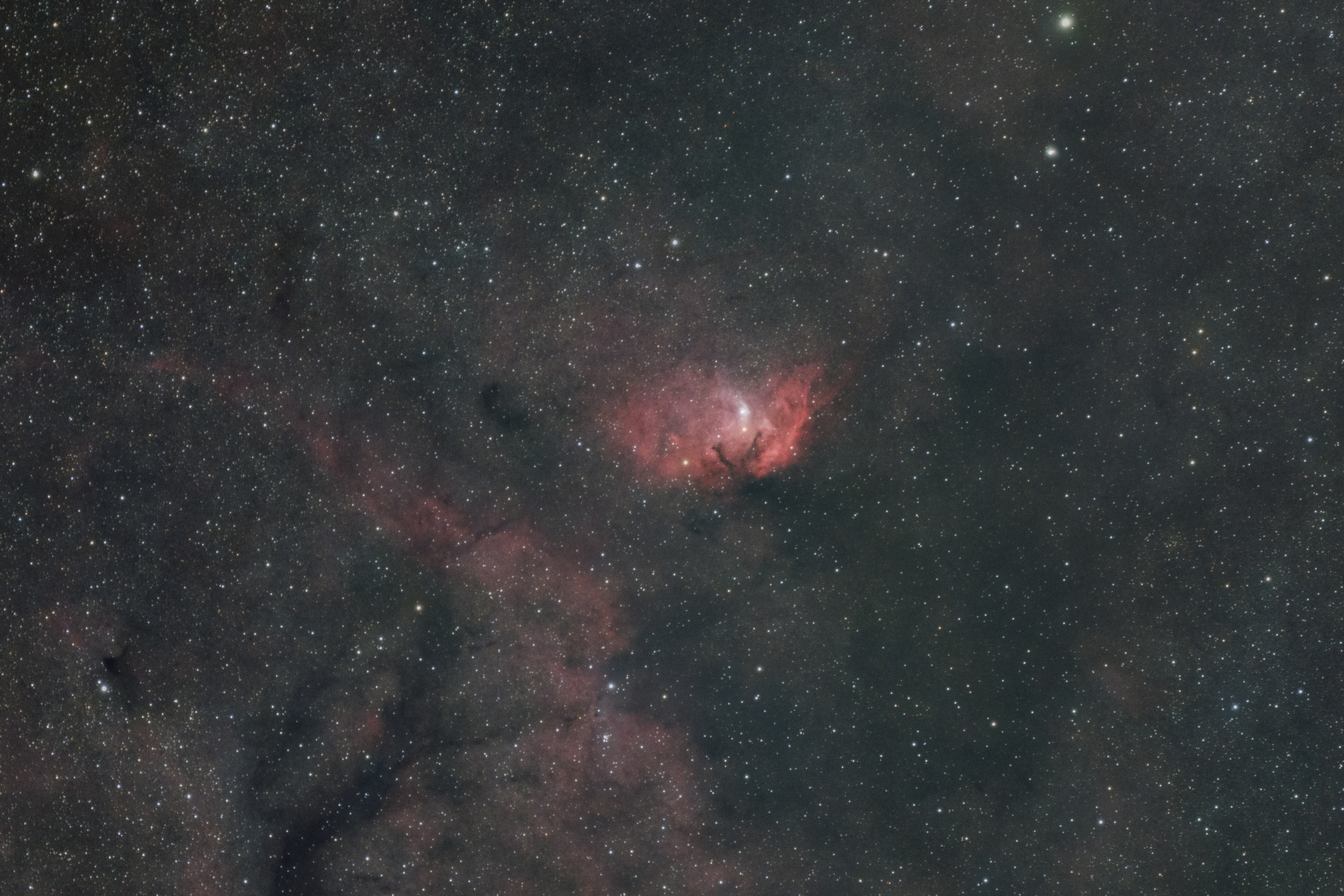
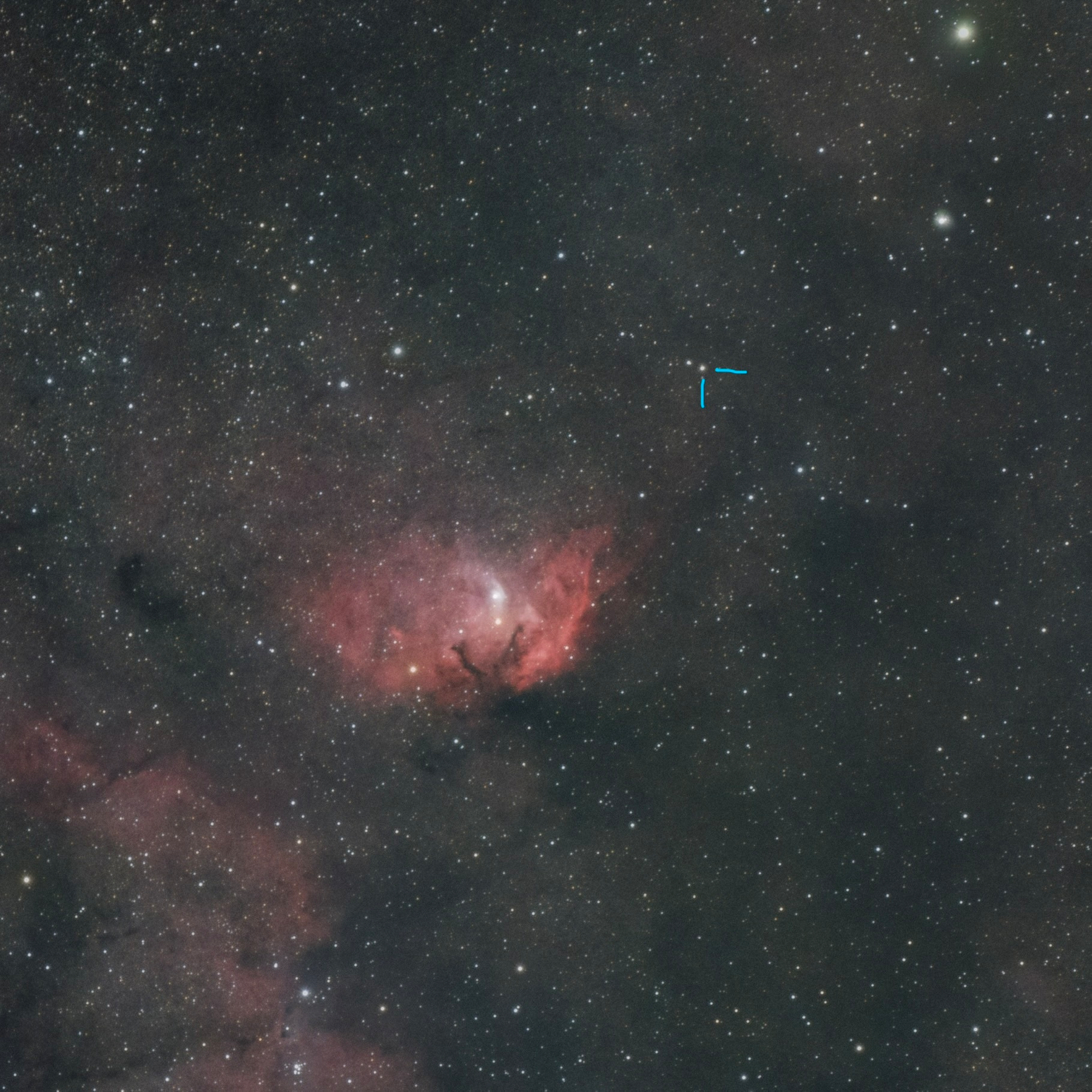
Iris nebula (NGC7023) is located in Cepheus at 1300 ly. This reflection nebula is surrounded by dark dust and cold molecular gases making these convoluted fantastic shapes. This image is a stack of 48 five minute exposures.
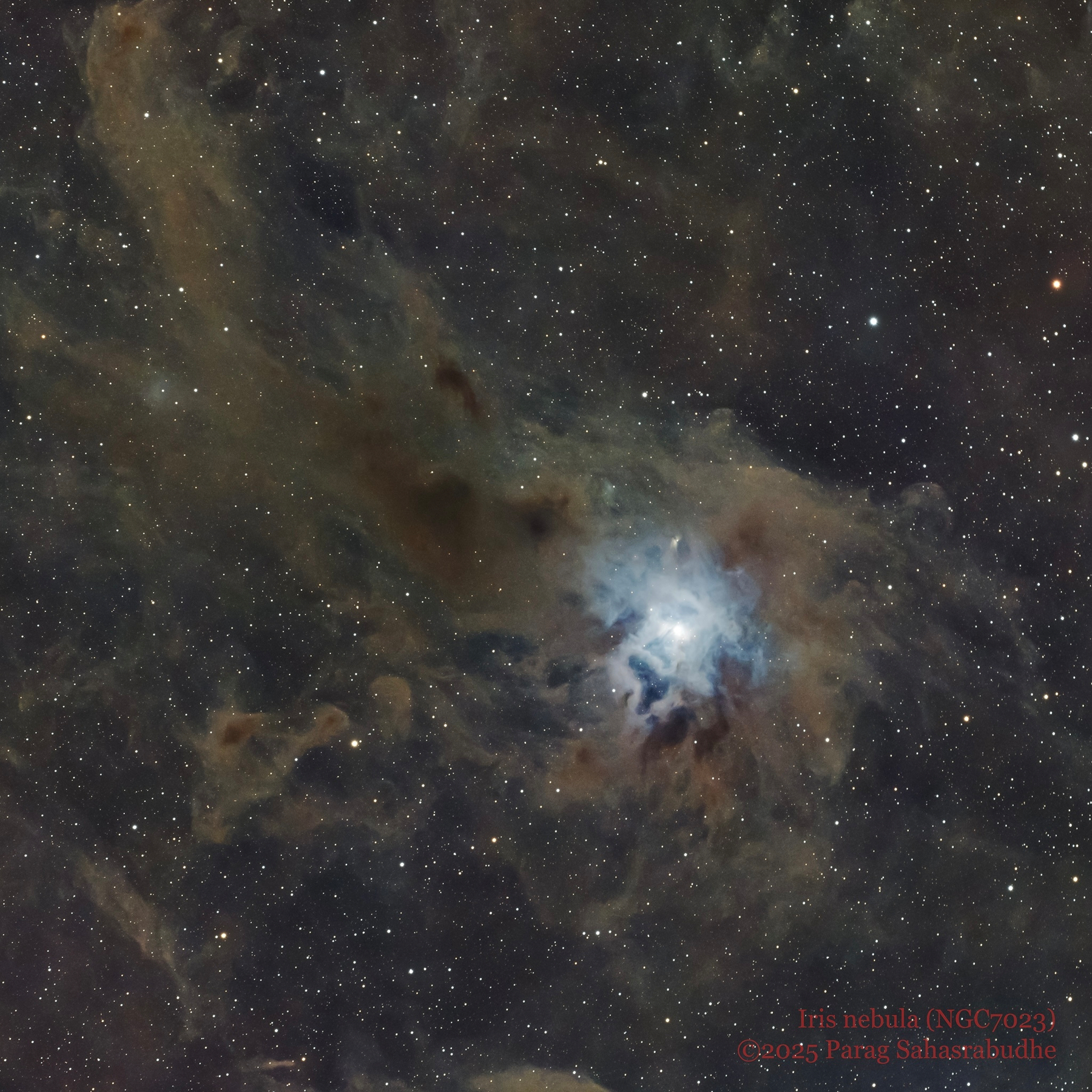
Our nearest neighbor Andromeda galaxy captured last night. This is a stack of 35 three minute subs. Tried to bring out the dark dust lanes while processing this.
🔭WO UC108 📷ASI2600MC-Duo #astro

First time capturing this elliptical galaxy NGC404 aka Mirach’s ghost as it appears next to Mirach. This galaxy is 9.7 ly away in Andromeda. #astro
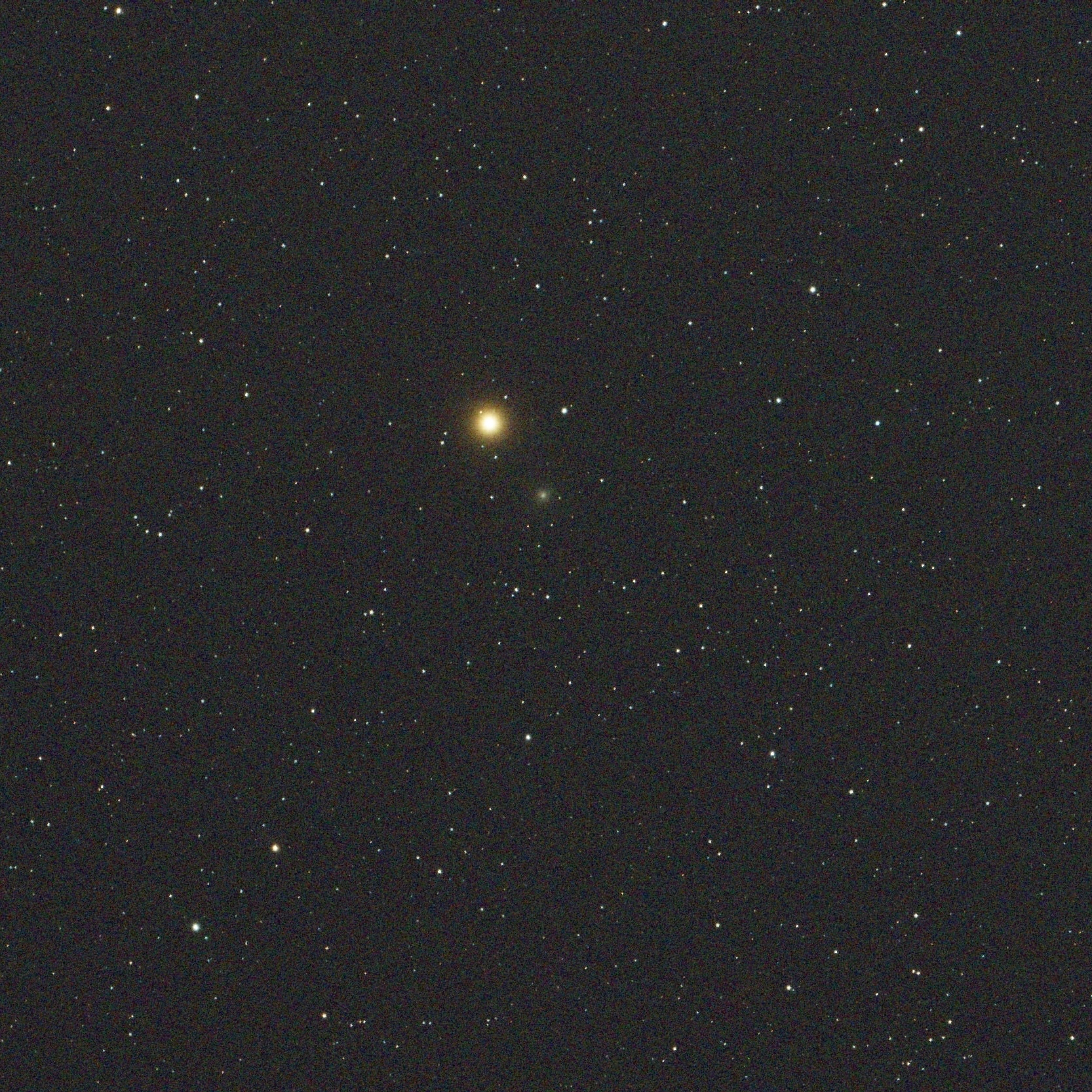
First attempt at capturing the Pleiades (M45) cluster with my new imaging setup. Got only 25 one-minute subs before clouds spoiled the night. Will be adding more exposures to this in coming days and weeks.
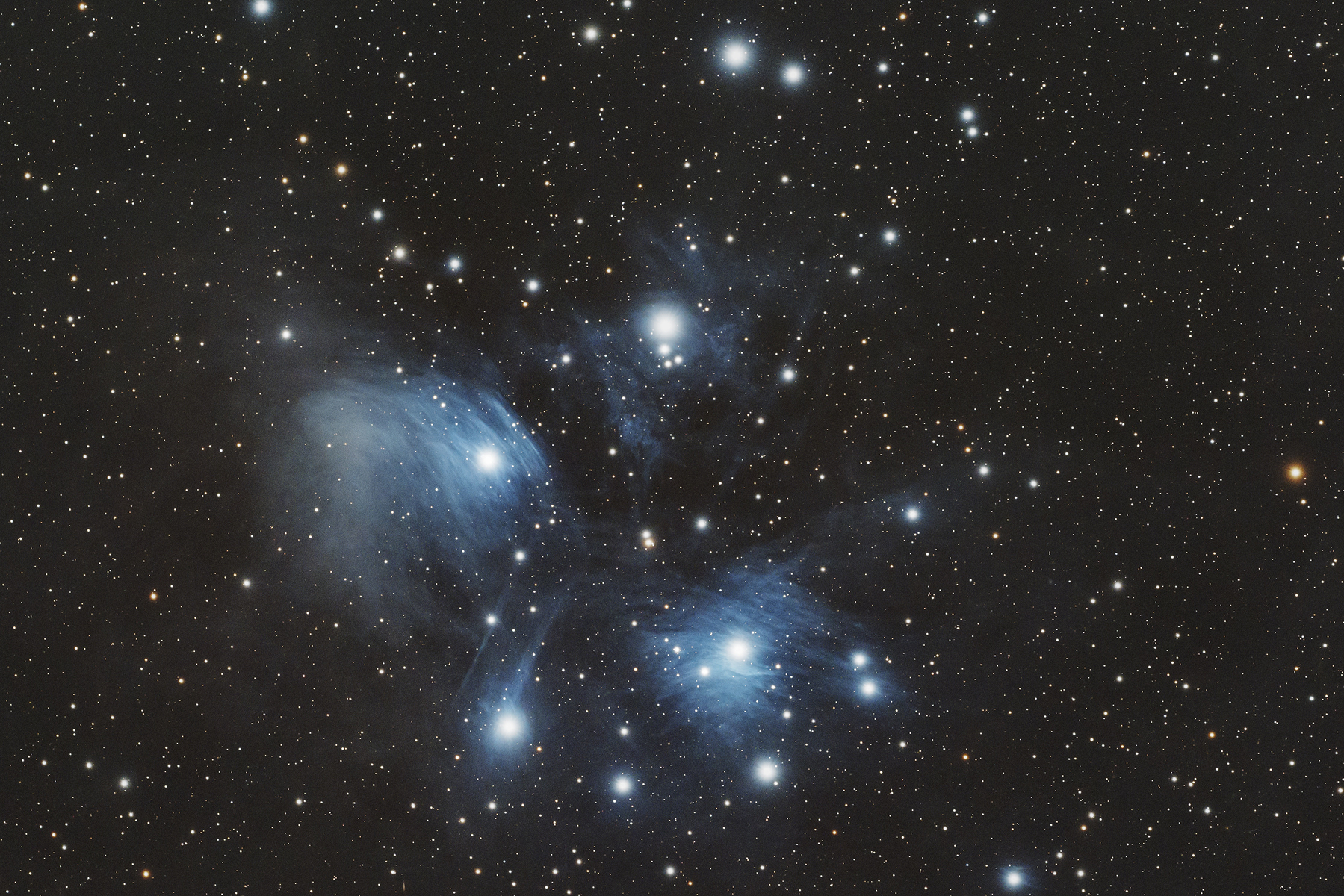
Caroline’s rose (NGC7789) is an open star cluster in Cassiopeia. This was discovered by Caroline Herschel in 1783. This area of the sky has so many stars that it is hard to differentiate the cluster from the background stars.
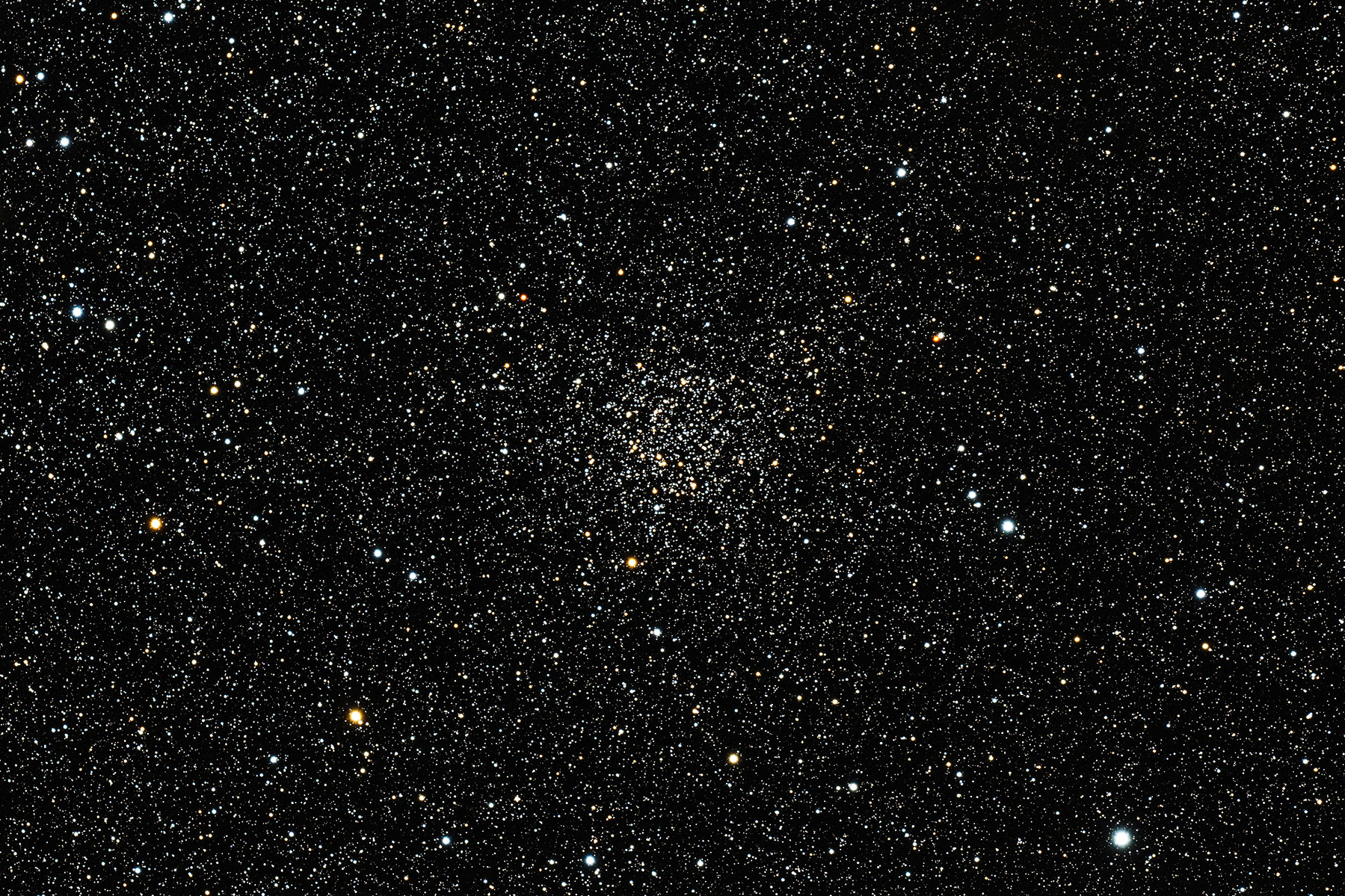
Comet Lemmon from last week. Finally got around to processing photos from Nikon Z6. 25 six second exposures taken with 70 mm lens at f/4 were stacked to make this image.
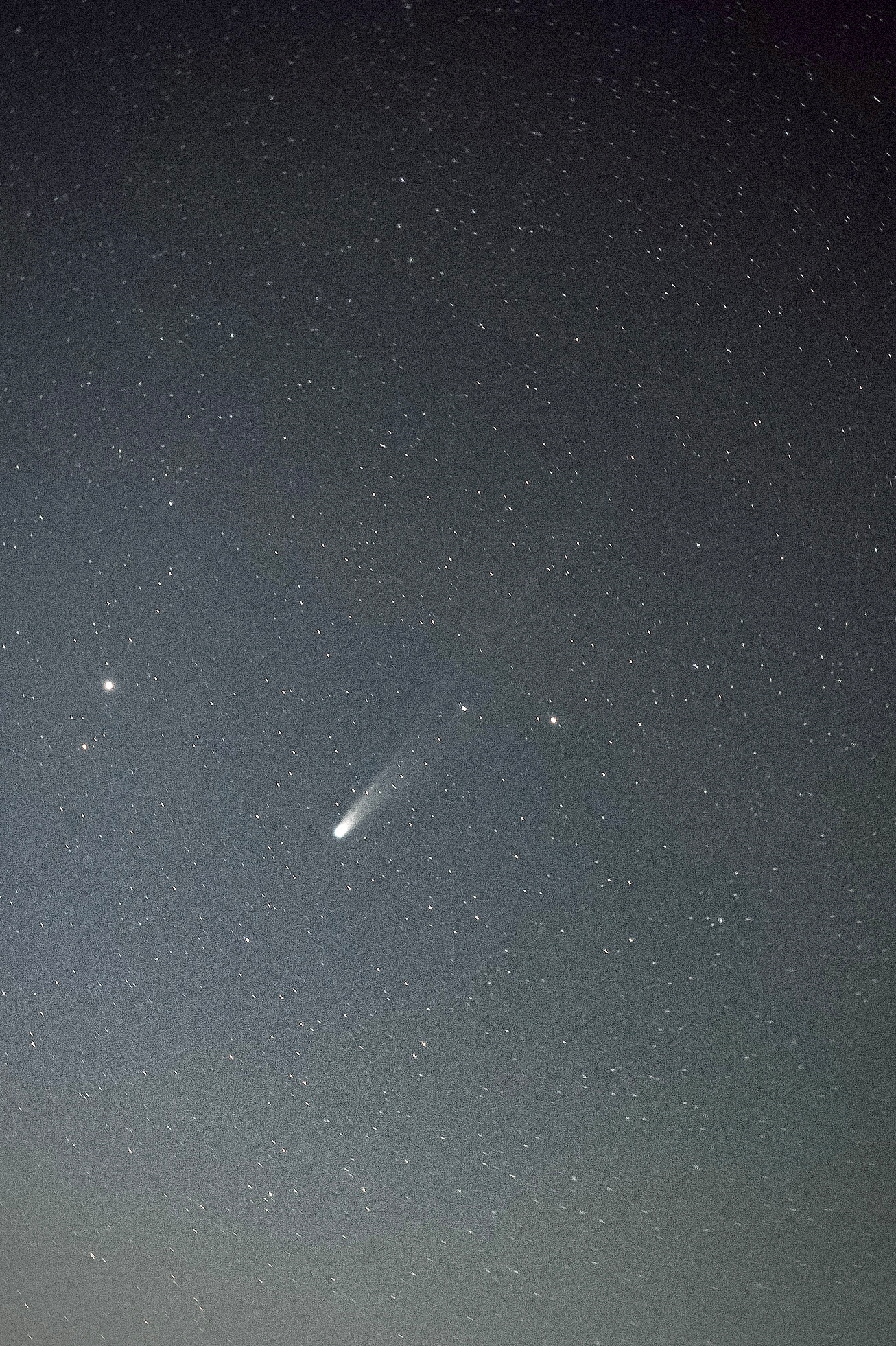
Comet Lemmon on Oct 21, 2025. I really like how the ion and dust tails are clearly visible. This image is a stack of 226 ten second exposures. Total exposure about 40 minutes.
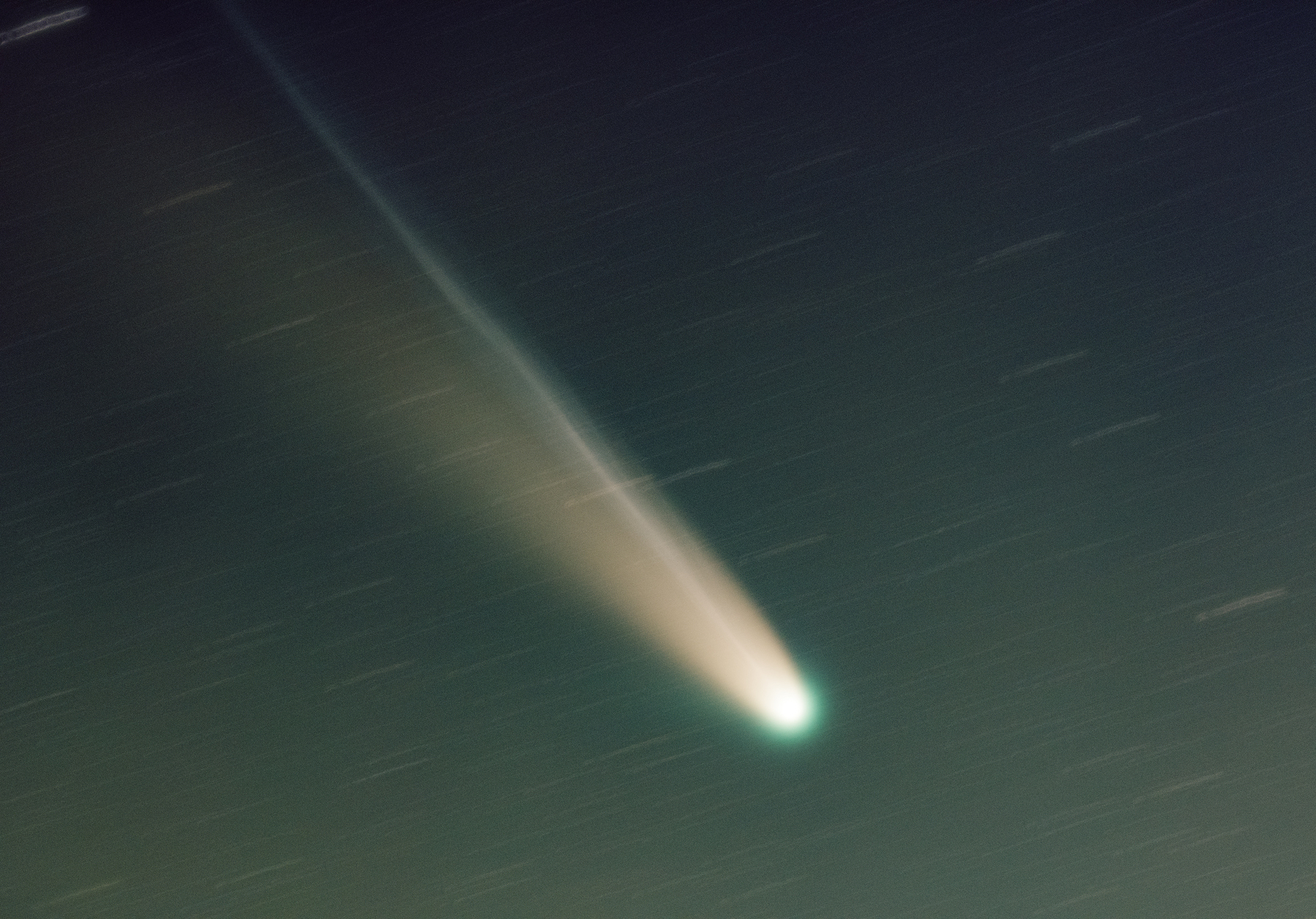
Comet Lemmon from last night. Nice coma and tail can be seen.
Taken with Nikon Z6 with 70-300 lens at 300mm f/5.8. 30x10sec exposures stacked in Siril. Focus wasn’t perfect. Will try again tonight with a refractor.
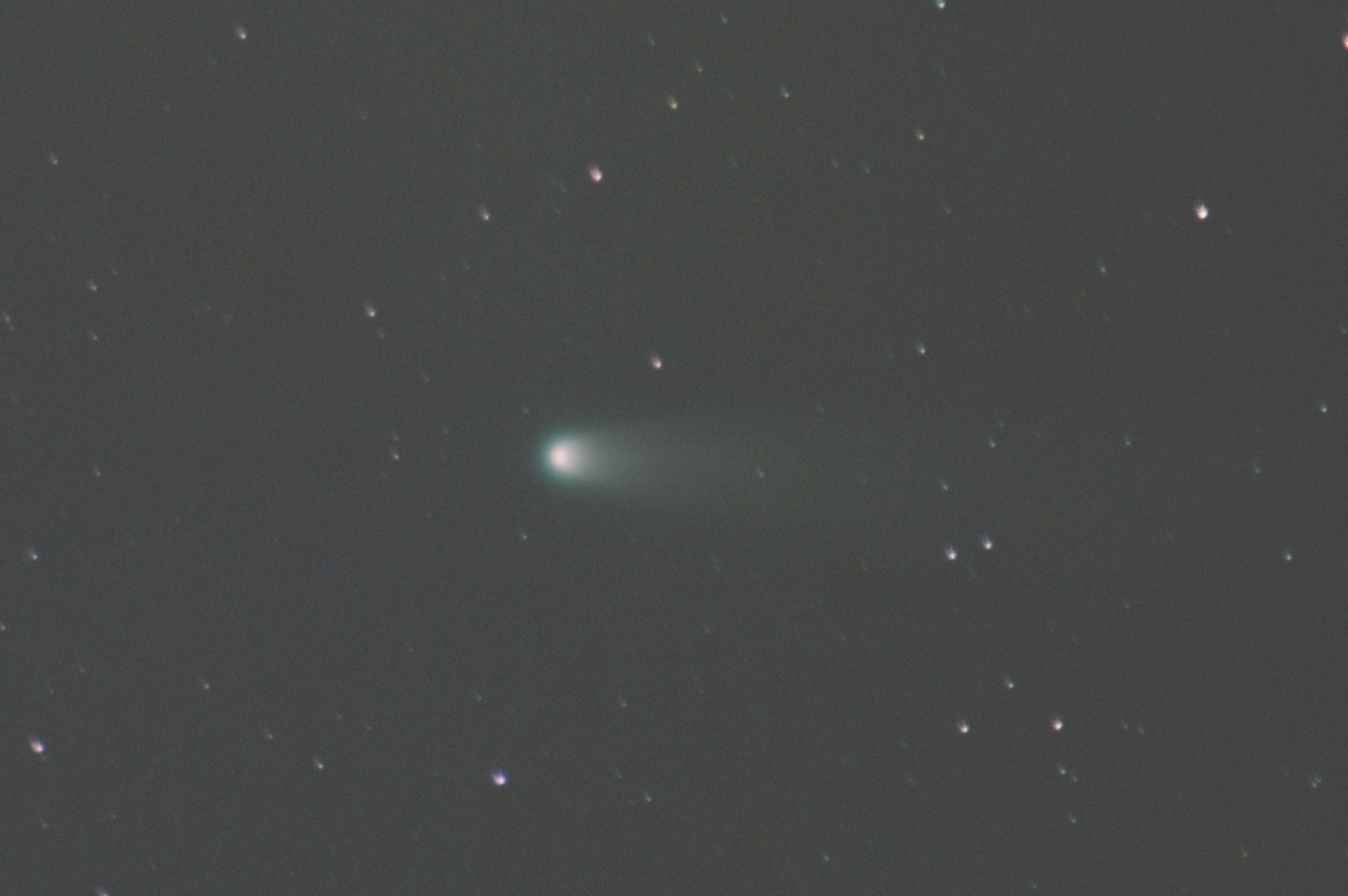
Learning about different color palettes that are used in processing Hubble images. That process can be applied to amateur one-shot color astrophotos too and there is a SIRIL script to do that. Here is the same data for Wizard nebula that I posted earlier in SHO palette.
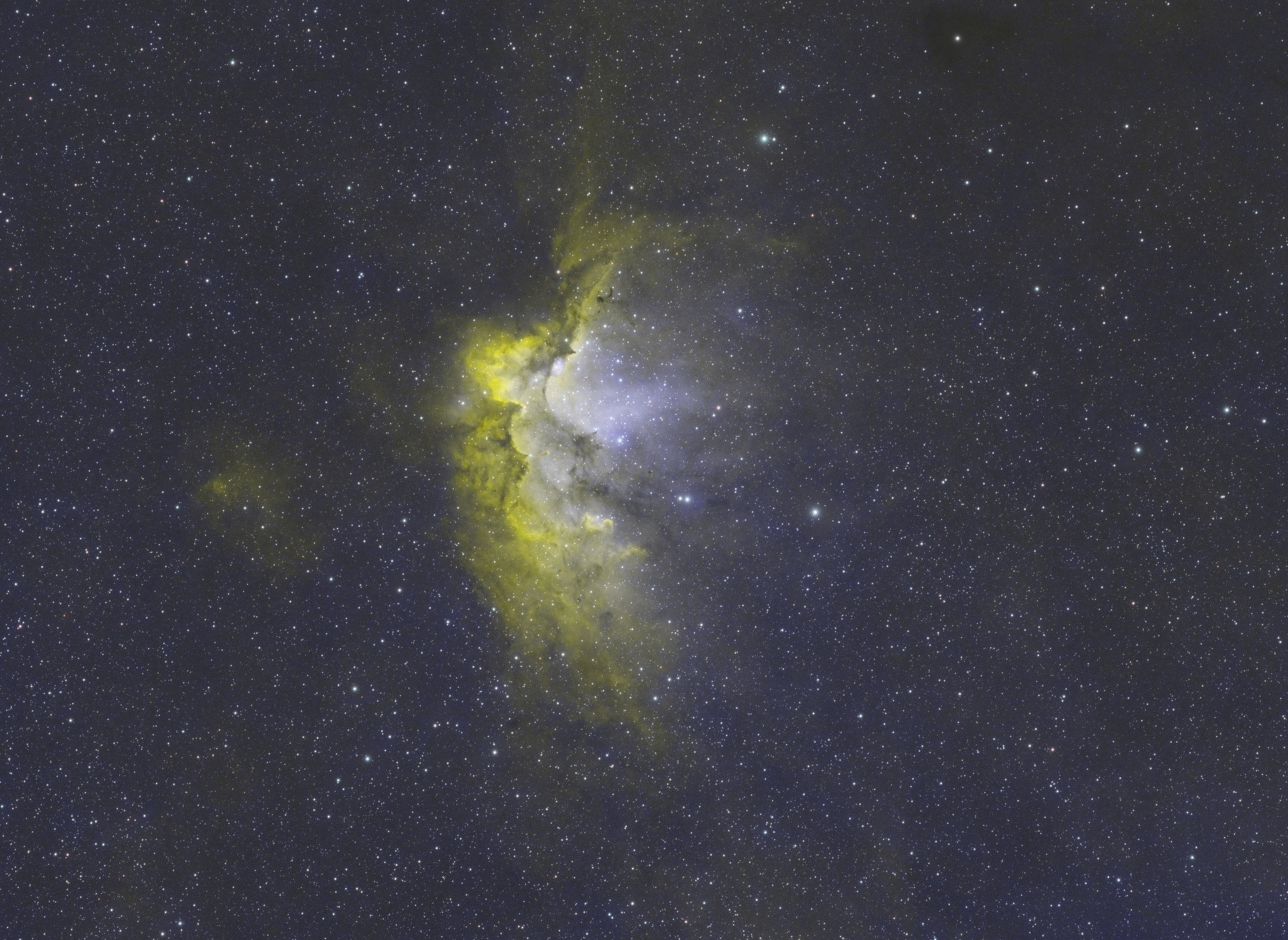
The Wizard nebula (NGC7380) is an open star cluster and star-forming region, located about 7,000 light-years away in the constellation Cepheus. More details at Wikipedia.
This image is a stack of 82 five-minute exposures taken with a refractor attached to an astrophotography camera.
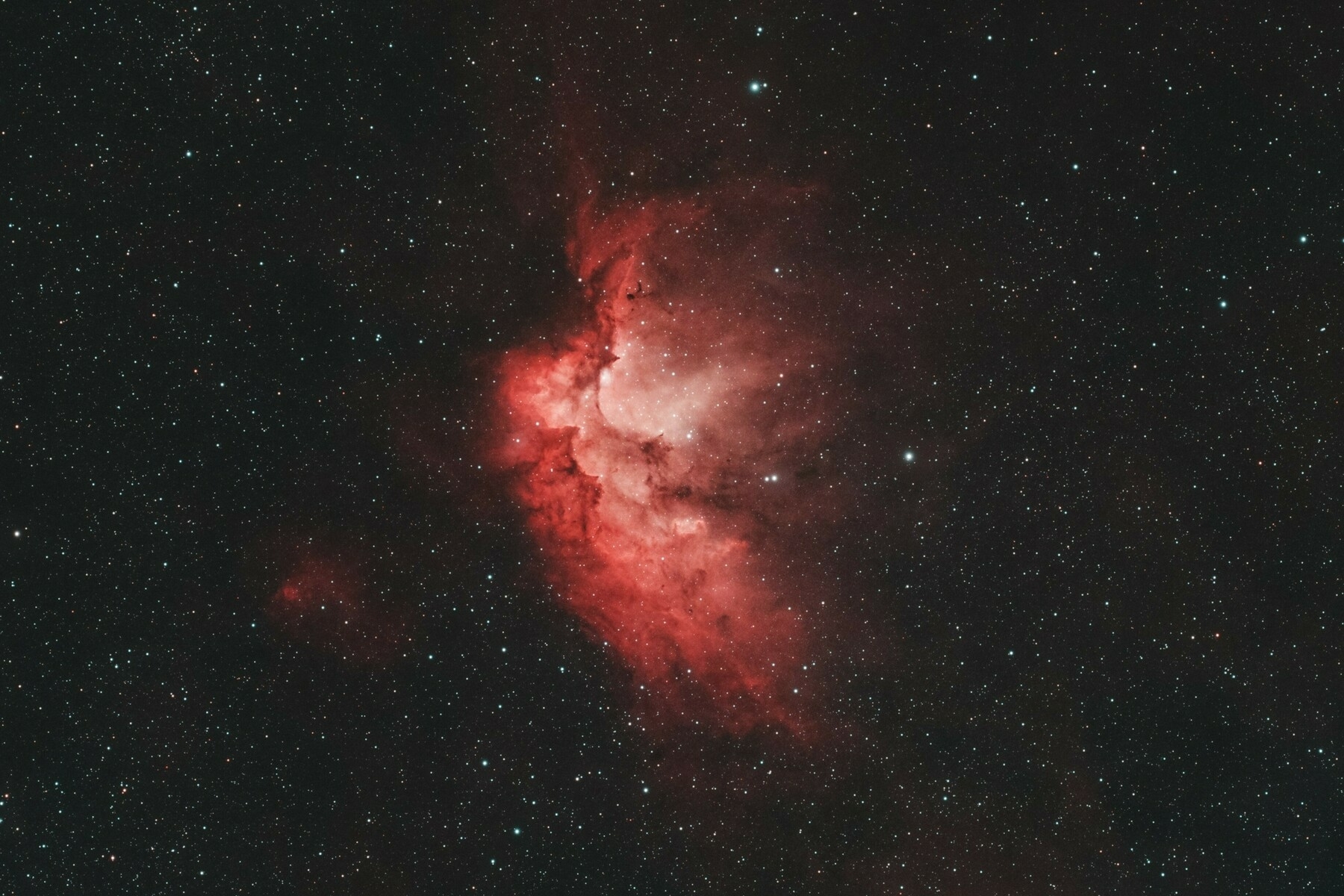
North American and Pelican nebulae. I really like the intricate details in the dark nebulosity that lies between them. The total exposure time for this image is 6 hours (72x5min). For the first time, I kept my scope imaging all night while I slept. 😄
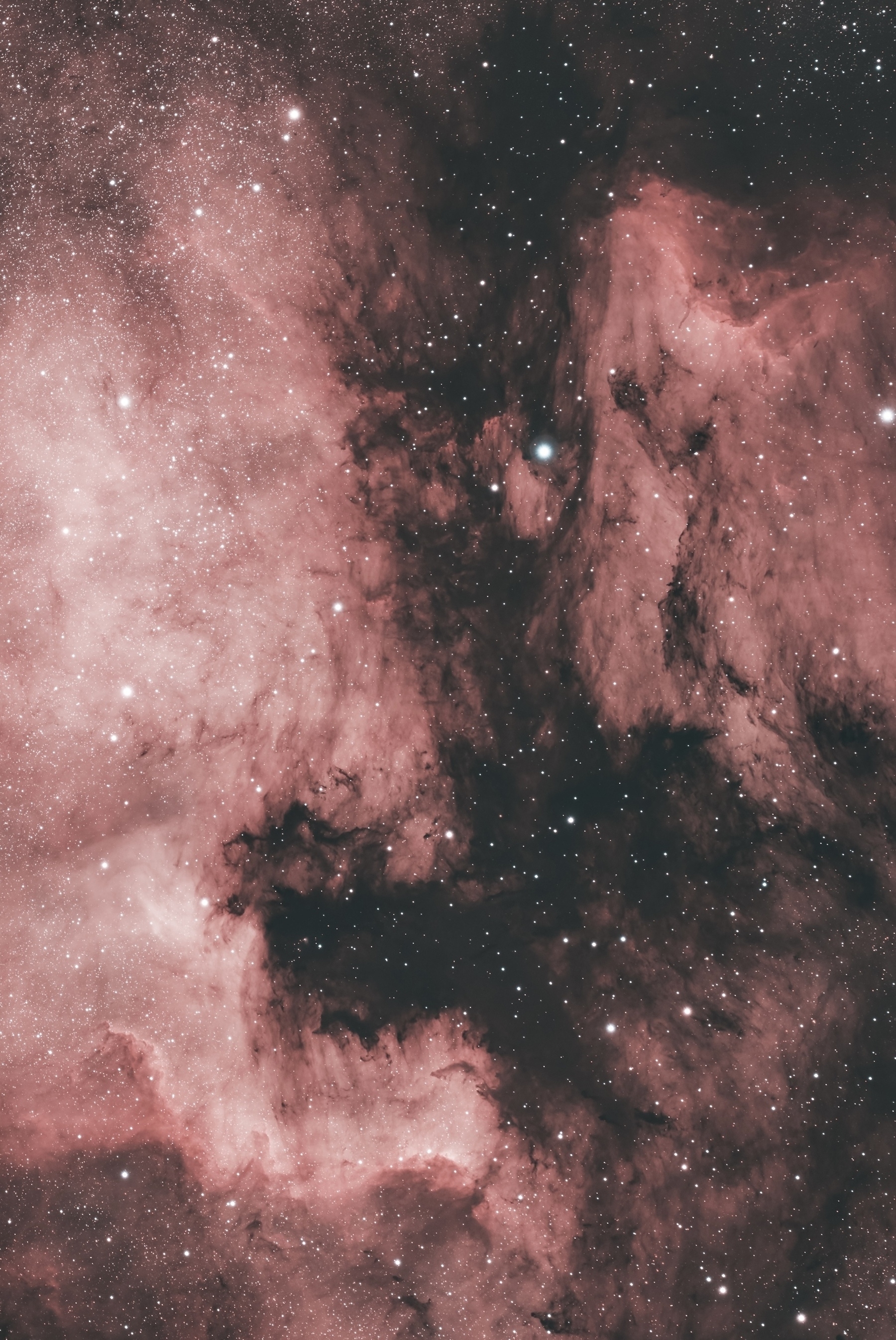
Night sky is quite dark in Acadia NP. This Milky Way photo was taken at Eagle lake with iPhone15. Will process the images from other camera when I get home.
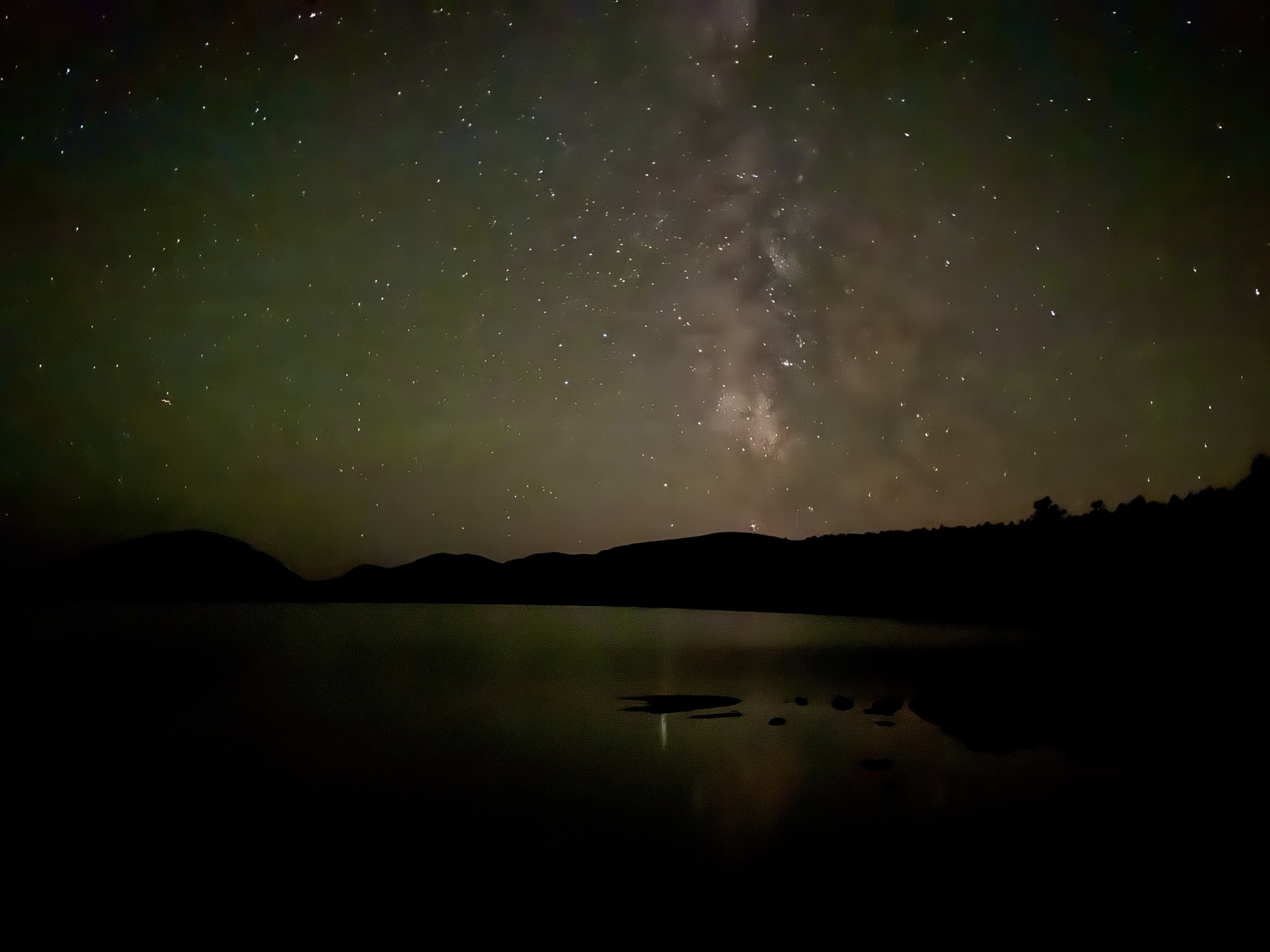
The Crescent nebula (NGC6888) from Cygnus with lots of nebulosity around it.
Total exposure was 2 hours (40x3min) for this image taken with William Optics UltraCat108 attached to ASI2600MC-Duo with Optolong LeNhance dual band filter. Processed using SIRIL and Photoshop.
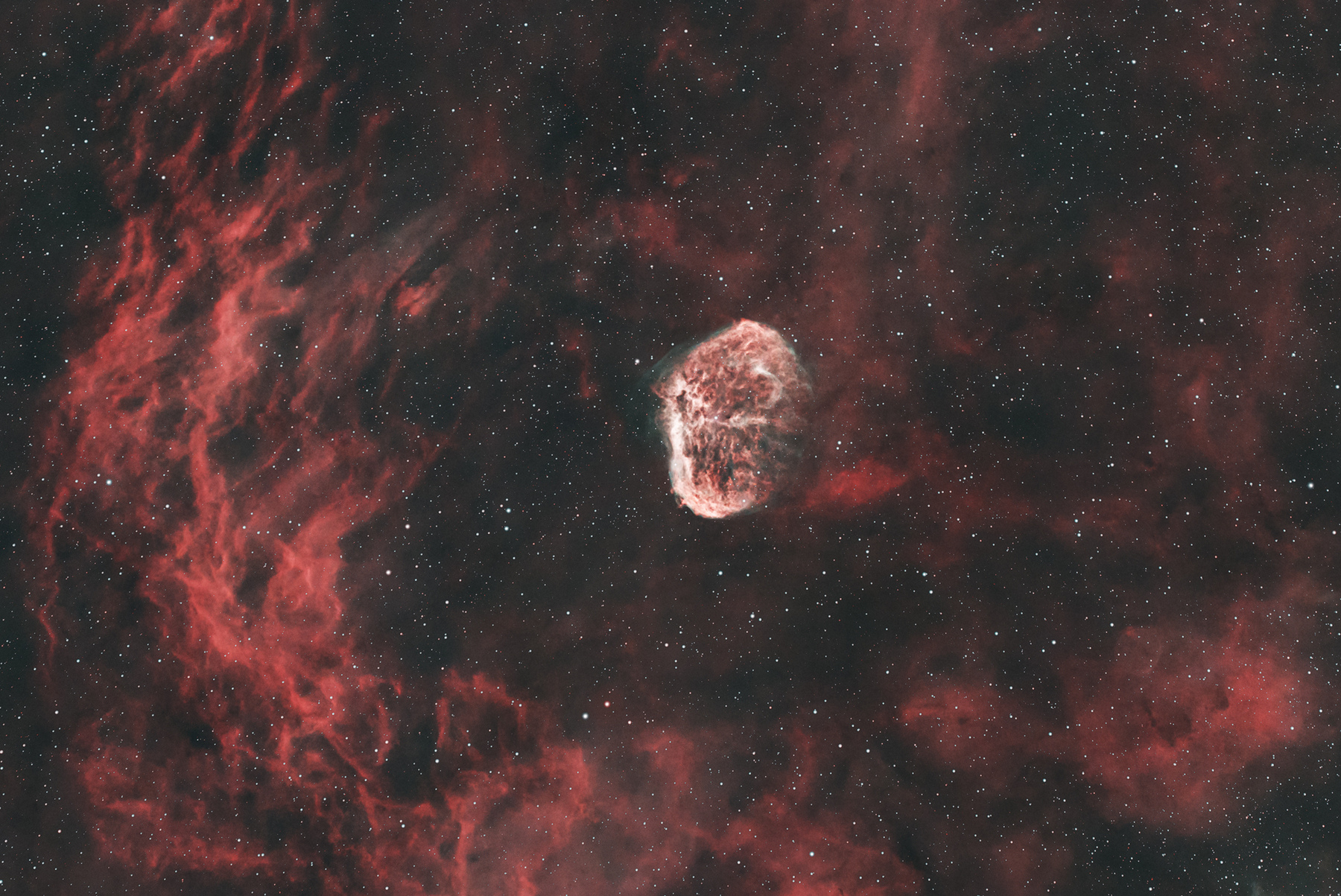
The Veil nebula from the constellation of Cygnus. This is a 2 frame mosaic with 2 hours of data capture (40x3min) for each frame. Taken with William Optics UltraCat108 attached to ASI2600MC-Duo with Optolong LeXtreme dual band filter. Processed using SIRIL and Photoshop.
